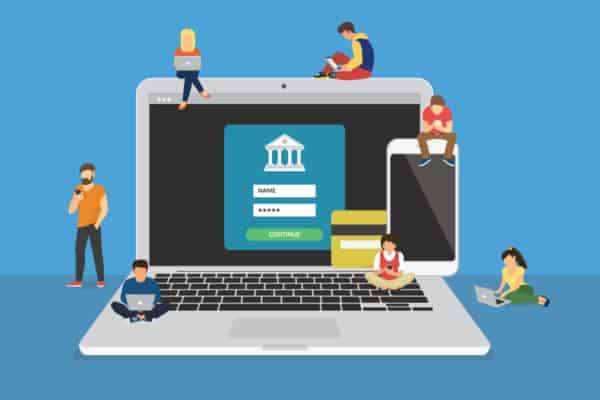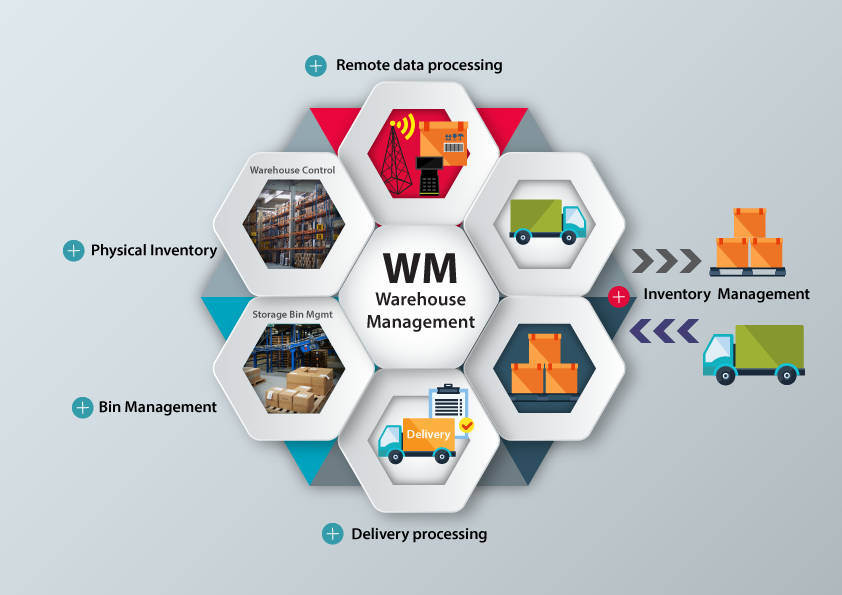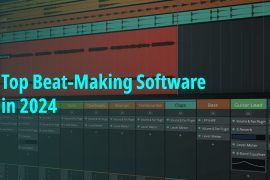Digital Banking Platforms are internet-only financial services, as opposed to online banking, which refers to specific online banking components with physical locations (known as traditional banking). To build fully digital financial services, digital banking systems rely on process automation, web-based services, and APIs.
Many Digital Banking Platforms promote cross-institutional services by integrating their services with those of other financial institutions in order to give consumers comprehensive digital banking services—for example, by adding a third-party debit card to a digital bank’s product range. Customers and the user experience, however, remain at the heart of digital banking platforms. In a fast-paced world, digital banking platforms enable clients to handle all of their money, including payments and investments, from their smartphone and other internet channels.
Customers and organisations can take advantage of the following benefits and capabilities provided by Digital Banking Platforms:
- Savings and checking accounts
- In comparison to traditional banking, we offer competitive interest rates.
- Apps for mobile devices
- Instruments for financial management
- Alerts for real-time transactions
- Wallets on the internet
- Cardless payments and virtual cards
- Payments made directly to individuals
- Deposits at a remote location
- Deposit protection
- Transactions at participating ATMs are free.
- FX rates that are competitive or even zero
- Deposit insurance and complete compliance with regulators
Digital Banking Platforms have taken the world by storm. Let us look into their market size to understand this in detail.
Table of Contents
Market Statistics of Digital Banking Platforms

The global Digital Banking Platforms market is estimated to increase at a Compound Annual Growth Rate (CAGR) of 11.3 percent from USD 8.2 billion in 2021 to USD 13.9 billion by 2026. The market for digital banking platforms is rising due to increased demand among banks for better client experiences and financial institutions’ use of cloud-based solutions.
Because distant working and social distancing have helped digital banking obtain a large customer base, the spread of COVID-19 has resulted in increased use of banking components. In North America, 35% of people use online banking more now than they did before the coronavirus. Overall, digital-only customers are still much less satisfied than their branch-dependent counterparts. Small and medium banks account for over 20% of the European banking sector. They are directly supervised by the national government. During Covid times, financial regulators across APAC have actively encouraged financial institutions to explore alternative business models, advocating the use of regulatory technology (regtech) and digital technologies as best practices.
Now that we have understood Digital Banking , how they work and their current status in the market. One thing’s for sure, as the world turns to digital these platforms are here to stay. It is best to get adapted to the new way of payment with Digital Banking Platforms.
Having trouble getting started? Don’t worry we got your back. Here is a list of Top 7 most trusted and safe digital banking platforms to get you started on your digital payment journey.
Top 7 Digital Banking Platforms
Oracle Banking Digital Experience
An omnichannel digital banking solution that can interact with any core processor and support all lines of business and is extremely flexible and context-aware. Oracle Banking Digital Experience enables banks to implement their digital goals without the need for a one-size-fits-all solution.
Oracle Banking Platform assists in reducing technology complexity and expense, driving innovation through progressive transformation, industrialising business processes, implementing new distribution methods, and implementing essential corporate capabilities.
FIS Core Banking
Everyone from garage start-ups to major corporations can create quicker, smarter, and more securely than ever before thanks to cloud-based software. FIS Core Banking provides agile solutions that, thanks to a componentized architecture, connect effortlessly with our core systems or with others. Community, mid-tier, big, and global financial institutions can use this method to surround their historical core platform with components that will allow them gradually convert their core banking systems. Institutions may offer a genuinely differentiated customer experience with FIS entire banking solutions.
NCR Digital Insight
NCR’s Digital InsightTM solutions offer retail and corporate banking customers the freedom and power they need to engage more customers, boost retention, and cross-sell efficiently. Customers will enjoy the experience, and income will reflect this.
NCR’s Design Thinking approach uses research and empathy-based methodologies to gain a deep understanding of client demands, followed by ideation and quick experimentation to see how financial institutions may best meet these needs with a digital solution. To better serve its members, Parsons, Educators, and AERO look forward to creating experiences inspired by this approach.
Accounts By Cashfree
Cashfree’s Accounts is designed for neo-banks, fintechs, and other platforms that want to provide financial services. Businesses can utilise Accounts to rapidly open bank accounts for their customers, allowing them to conduct everyday banking transactions such as adding funds, sending money, checking balances, and so on.
Businesses may quickly incorporate banking services from prominent banks into their products using Accounts.
Businesses can utilise Accounts Dashboard to add users and create digital accounts for them, or they can integrate the API into their product to provide consumers with a native banking experience.
Another issue we’d like to address for organisations is user onboarding.
Neo banks and other platforms can utilise Accounts to create bank accounts for first-time users who don’t have one yet, or to extend account creation capabilities to existing customers.
Backbase Digital Banking
Backbase is a cutting-edge omnichannel digital banking software solution that combines data and functionality from core banking systems and fintechs to create a seamless digital customer experience across all channels.
Administrators can use the Backbase platform to embed widgets across many portals and devices, manage content in multiple languages, and create and deploy campaigns across multiple touchpoints, giving customers a better browsing experience. Customers can monitor checking accounts, savings accounts, debit and credit cards, personal and mortgage loans, as well as track ATM visits, transactions, and direct transfers, using configurable dashboards created by retail banks and credit unions. Additionally, the money transfer feature handles both domestic and international transfers, and clients can send money securely via email or cell phone number.
Administrators can use Backbase to develop rule-based workflows to manage tasks like loan origination and digital account creation. It has a REST API that allows it to be integrated with third-party CRM systems like Salesforce.
Mambu
Mambu is a cloud-based banking platform that allows financial institutions to manage, monitor, and control financial activities from a single location. It provides a composable banking system that enables businesses to create, configure, and deploy banking products and financial services based on the needs of their clients.
It allows banks to develop and launch lending or deposit portfolios, execute transactions, and store customer, account, and transaction data in a single location. Customer experience management, risk assessment, configurable workflows, credit decisioning, security authentication, data analytics, and more are all features of Mambu. From loan origination through servicing and collection, the application allows financial teams to streamline lending operations.
Mambu uses REST APIs to integrate with a variety of third-party programmes, including Zenoo, Infinitus, Bankingly, backbase, Ondato, and others.
EBANQ
EBANQ® is an online banking system for NeoBanks, Electronic Money Institutions (EMIs), and other financial service providers that is web-based and mobile-ready. We can get your completely branded system up and running in as little as 24 hours!
For a free sample and further information, go to the EBANQ main page. Users may move between their cards and accounts, see their balances and recent transactions, receive notifications, and more. The EBANQ mobile app connects to any current EBANQ web banking platform, delivering a better user experience for the end-user. The app has all of the features of the online interface and may be customised to match the organization’s identity.
Conclusion
Digital banking systems are far more adaptable than traditional banking systems, allowing banks to add and expand services much more quickly. To provide banks and their customers with high levels of cost effectiveness, security, and flexibility, digital banking relies on high-level process automation, web-based services, and APIs. Modern banking systems facilitate a fully digital customer journey by creating real-time data streams and speeding up crucial analyses.
Another phrase that gets mixed up with online and digital banking is mobile banking. It is a service provided by an existing bank to its customers that allows them to do transactions using their mobile devices instead of going to a bank branch.
So, of the three concepts, digital banking is the most wide. It is risk-free to use. It is also made up of a combination of mobile banking and online banking, thus providing benefits of both.
Looking at the advantages Digital banking platforms provide, it would be safe to say that it is indeed a smart choice to adapt to one as soon as possible. The choices provided above are few of the best digital marketing platforms in the industry.
For more options and information on Digital Banking Softwares, head to Saasworthy.com






